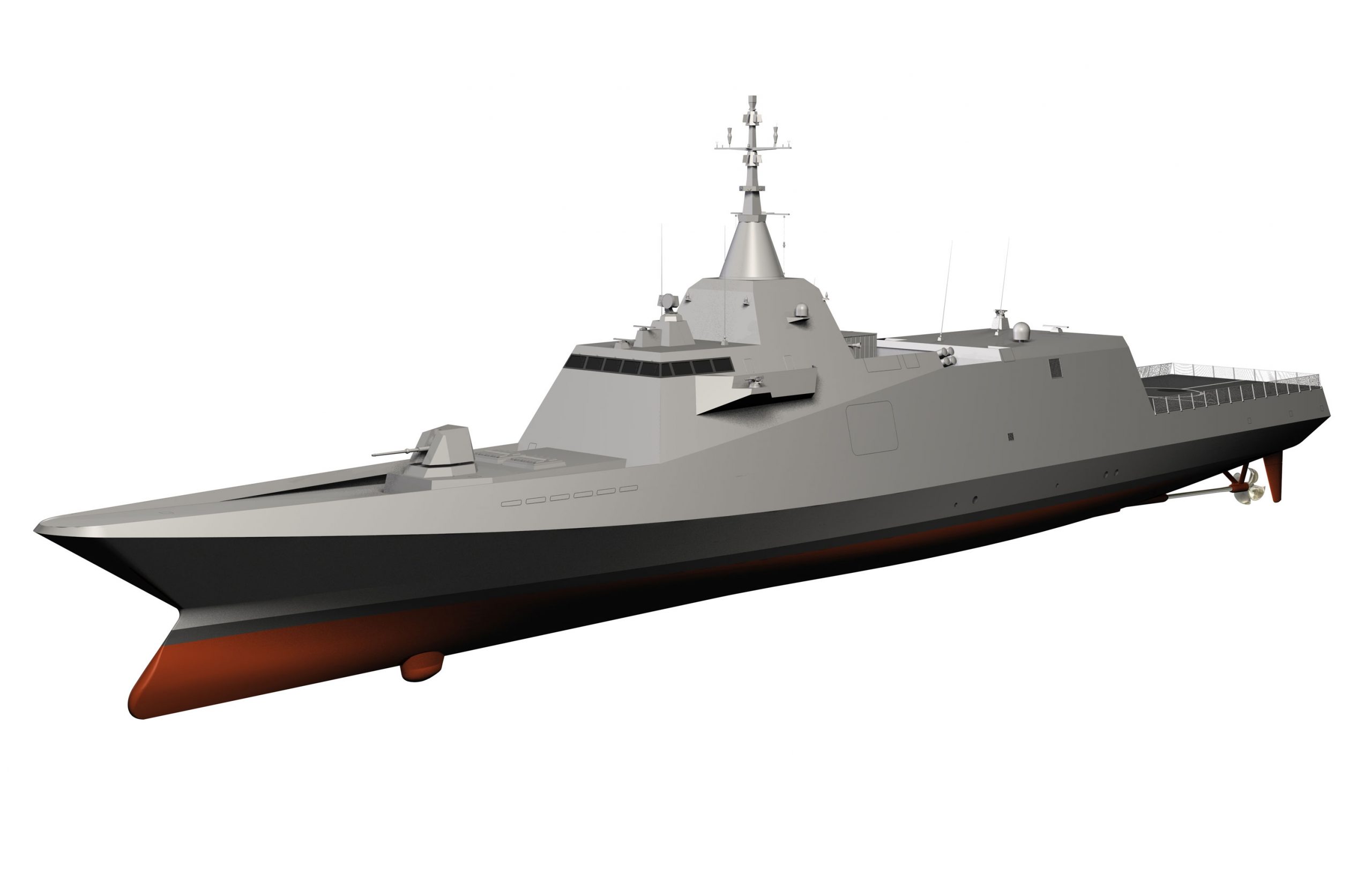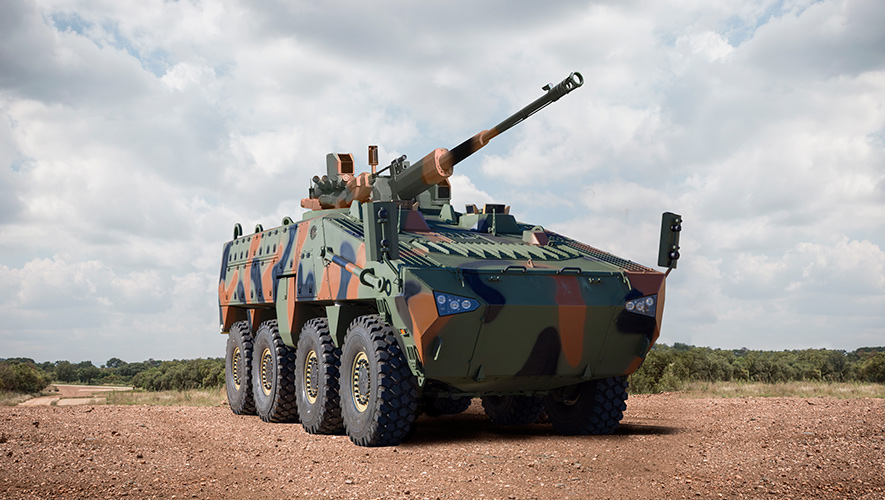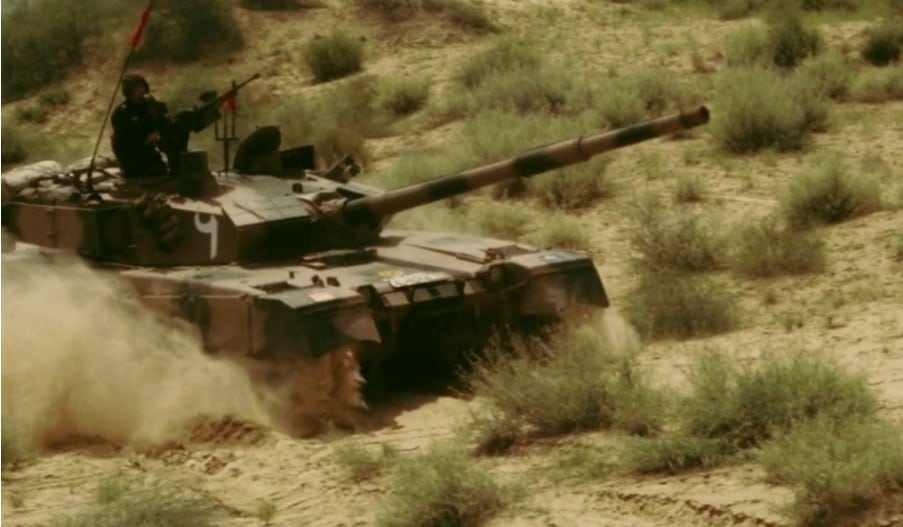2737Views 5Comments

France in the process of developing new medium multi-role frigate
The French Navy, DCNS, Thales Group, and the Direction Générale de l’Armement (DGA) have been in the process of designing a new 4,000-ton multi-mission frigate for the French Navy (Defense News).
The new design, which is expected to choose from a shortlisted set of five proposals, will sit between the 6,000-7,000-ton FREMM (which forms the basis of the French Aquitaine-class and Italian Bergamini class) and the DCNS Gowind-line of corvettes. The French Navy is planning to procure five of these new frigates, which had been designated as Frégate de Taille Intermédiaire (FTI) – i.e. intermediate-size frigate.
It is likely that the high-cost nature of the FREMM has driven France to develop the FTI. The FREMM was envisaged in the 2000s with the aim of creating a versatile and long-range surface warship design. In fact, the heavy displacement of the FREMM places it in the range of legacy destroyers, enabling these platforms to possess relatively very capable sensor, armaments, and electronics support measures (ESM) suites. However, with a unit cost of €670 million (i.e. $738 million U.S.), the FREMM is not entirely tenable, especially in more cost-sensitive export markets.
In some respects, it appears that France is embarking on the same route as the U.K., which had tasked BAE Systems to design a more affordable frigate design to supplement the forthcoming Type 26 frigate (also known as the Global Compact Ship). Accessing the export market is one of the core objectives of the BAE program as well. France and the U.K. are planning to tie their respective ‘light’ frigate designs to their domestic acquisitions, so as to generate a measure of scale and further control cost. In turn, these designs could be relatively attractive export offerings.
This shift, at least in part, could be attributed to the surge of competitive and credibly capable frigate and corvette designs being produced and marketed outside of Western Europe. In September, the Philippines Navy awarded Hyundai Heavy Industries in South Korea a $337 million U.S. contract to build two frigates as part of its fleet modernization program. Hyundai’s leading competitors included fellow South Korean vendor Daewoo Shipbuilding and Marine Engineering Co. Ltd (DSME) and India’s Garden Reach Shipbuilders and Engineers (GRSE) – i.e. two Asian shipbuilders.
Pakistan is currently interested in having Turkey’s Savunma Teknolojileri Mühendislik ve Ticaret A.Ş. (STM) design and produce four corvettes. Prior to this, the Pakistan Navy procured four F-22P – i.e. Zulfiqar-class – multi-mission frigates from China Shipbuilding Industry Corporation (CSOC). With fiscal responsibility and competing priorities looming large in the Middle East and Pacific Asia markets, respectively, emerging shipbuilders from South Korea, Turkey and India are increasingly becoming the ‘go to’ vendors for surface warship designs that – while not necessarily as sophisticated or cutting-edge as new Western designs – are modern and relatively very capable, but markedly more affordable.
Emerging shipbuilders can credit several native attributes to their success in managing cost. First, lower cost of labour and materials. Second, wide domestic scale. In South Korea for example, the Incheon-class frigate is envisaged to have a total production run well in excess of 12 ships, likely more if the legacy Ulsan-class frigates and Pohang-class corvettes are to be completely replaced. Likewise, the Turkish Navy is expected to procure 12 ships under the MILGEM program. Currently, financing mechanisms and credit are not readily available with emerging vendors, but this could change in the medium-term.
Returning to the issue of the French FTI program. It is worth noting that DCNS had proposed a concept in the late 2000s known as the FM400. The DCNS FM400 was a lighter derivative of the FREMM and it too had a stated displacement of 4,000-tons. To what extent the FTI will draw upon the FM400 is not known considering that the Gowind-line may serve as a rival line of inspiration.
In order to help scale – as well as provide further funding insurance – it would be interesting to see if BAE and DCNS opt to engage an external party to serve as a launch customer. Both vendors have experience dealing with Saudi Arabia, which balked at signing a $11.25 billion U.S. deal with the U.S. for four Multi-Mission Surface Combatant (MMSC) ships. DCNS could potentially work to build upon its La Fayette success in Saudi Arabia and market the FTI as an alternative to the MMSC. Efforts in Pacific Asia and North Africa should be expected as well.



5 Comments
by GhalibKabir
Cost wise DCNS and other European manufacturers are going to face a tough battle. The Chinese, South Koreans already are and of late the Turks and in the near future the Indians are going to get more and more competitive, (my country lost a Philippines deal for 2 light frigates supply over payment method despite being the L-1 bidder). The Chinese esp. their construction standards & weaponry quality are improving leaps and bounds with every generation. it is no longer ‘cheap junk’, dismissing it so will only cause the Navantias, Fincantieris and DCNS of the world to lose more and more contracts. Barring the GCC+Egypt, I see more Chinese/Turkish/Russian/occasional Indian inroads into APAC and North/Coastal Africa.
by Saroumane
The FTi are like their predecessor La Fayette, 1st class Frigates, and they’ll replace them in the French navy.
They’ll have more or less the same equipment and weaponry than FREMMs, probably in lighter quantity, but with more sailors and less officers aboard.
The FREMM are 2nd class Frigates, they’re bigger with more officers and ammos aboard.
by Quraishi
Well not directly relevant to this post, but I picked up some information and thought would be nice to share, althought its sad.
Its to do with the performance of the C-802 anti-ship missile currently in use with Pakistan forces.
I saw the video few days of the attack, now you can see its performance in real scenario.
This was an attack by the houthi terrorists on HSV-2 Swift.
https://www.youtube.com/watch?v=WTNeEYlO3Iw
The ship wrecked afterwards.
https://www.workboat.com/news/bluewater/hsv-2-swift-wrecked-yemen-missile-attack/
by bill
The future success of naval warfare supplier lies with following main points.
1. Competitive costs
2.Stealth
3. Next gen tech
To me honestly Turkey looks to be leading in stealth features and tech however their grey area is cost/price which they overcome by maintaining high standards. Their Korean counterparts are more or less in same class. They both require some time to produce indigenous gadgetry then they shall be able to fully compete Western suppliers on other hand China though providing cost effective solutions yet there are question marks about some of their tech i.e SAMS and Radars.
by Bilal Khan - Quwa
The Europeans will (and have) depend more on commercial offsets and credit as a means to strengthen their competitiveness. For example, DCNS’ sale of Gowind corvettes to Egypt is accompanied by an agreement to produce 3 of the ships in Alexandria, and the deal was fuelled by a French Gov’t-backed loan. China, India and to an extent South Korea are probably in the best position to offer financing support, though the offset element will be mixed. I know China will agree to transfer aspects of the shipbuilding to the end-user, but for a higher cost. They won’t re-invest a portion of the contract value back into the buyer. India and South Korea probably have a higher incentive to maintain domestic jobs via their big-ticket exports, especially if native loans or credit are involved.